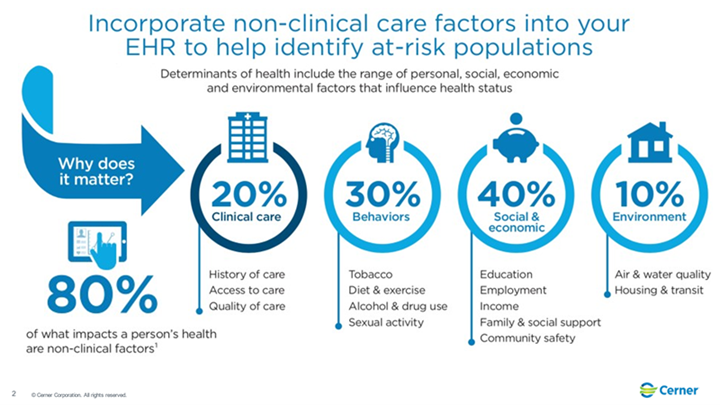With greater risk for COVID-19 exposure, severe illness, hospitalization and death - all people of color, as well as, Indigenous, LGTBQ+ and low-income communities -
have been disproportionately impacted by the pandemic. Marginalized groups have also been hit harder than non-marginalized communities when it comes to mental health, food insecurity, unemployment, housing instability and loss of health insurance.
While the COVID-19 pandemic has exacerbated long-standing health disparities, it’s also highlighted significant opportunities for the healthcare industry to drive change around eliminating health inequities and improving outcomes for all.
“Equity recognizes that each person has a fair and just opportunity unique to their individual circumstances. Whereas equality means that everyone is given the same resources despite consideration for their individual circumstances. Health inequity therefore speaks to all individuals not being given fair and just opportunities to access high quality care. The outcomes of health inequities are the health disparities we see across communities and groups of people.”
- Dr. Andrea Hendricks, Sr. Director, Cerner Chief Diversity, Equity & Inclusion Officer
Devastating impacts of healthcare inequity
We’re not only seeing stark differences in health outcomes during the COVID-19 pandemic, but we continue to see the devastating effects of historic and ongoing disparities in health outcomes across all specialties and venues of care. For example:
Black and Indigenous women are two to three times more likely to die from pregnancy-related causes than white women – and this disparity increases with age.
In 2018, Black patients were 30% more likely than white patients to die prematurely from heart disease.
LGBTQ+ patients “face health disparities linked to societal stigma, discrimination and denial of their civil and human rights” resulting in “high rates of psychiatric disorders, substance abuse and suicide.” Elderly LGBTQ+ individuals face additional barriers to health because of “isolation and a lack of social services and culturally competent providers.”
Over the last year, Latino food and agriculture workers experienced a nearly 60% increase in deaths compared with previous years; the increase for white workers was just 16%.
While these disparities are costing many their health, or even their lives, there’s also a broader economic cost.
A 2011 study estimated that eliminating health disparities for marginalized people would have reduced direct medical care expenditures in the U.S. by roughly $230 billion and indirect costs associated with illness and premature death by more than $1 trillion between 2003-2006.
The Urban Institute projected that from 2009 to 2018, racial disparities in health would have cost U.S. health insurers approximately $337 billion in total.
Addressing inequities, social determinants with data and technology
Non-clinical factors that influence health, often referred to as the social determinants of health (SDOH), are
defined as “the conditions in the environments where people are born, live, learn, work, play, worship, and age that affect a wide range of health, functioning, and quality-of-life outcomes and risks.” Underlying the SDOH are root causes, recognized in 2010 by the U.S. government to
include structural racism.
 “This is an opportunity to raise awareness about racial and ethnic disparities, examine health IT’s role as an unintentional contributor and create resources to eliminate inequities now and in the future.”
“This is an opportunity to raise awareness about racial and ethnic disparities, examine health IT’s role as an unintentional contributor and create resources to eliminate inequities now and in the future.”
- Dick Flanigan, S
enior Vice President & Brand Ambassador, Cerner
There is immense opportunity to support healthcare organizations with data and technology that can enhance understanding of the causes and impacts of health disparities and help providers deliver effective approaches to tackle inequities. For instance, the following organizations are using data to tackle inequities in their communities with the help of Cerner:
Roper St. Francis Healthcare in Charleston, South Carolina uses geospatial mapping capabilities within Cerner to analyze publicly available social determinants data in the communities they serve and implement appropriate strategies.
The University of New Mexico Health Sciences Center uses the WellRx screening tool within their Cerner platform to determine the correlation between adverse social determinants and poor health outcomes in populations with diabetes and other chronic conditions. The results led the organization to hire community health workers for all of its primary care clinics and its emergency room.
Northern Light Health in Brewer, Maine used the Cerner COVID-19 vaccine monitoring dashboards and serves as a testing partner for the HealtheAnalytics Determinants of Health dashboard.
North Central London ICS in the UK created a COVID-19 vaccination analytics dashboard focused on health equity. For the population served by the ICS “targeted public communication and engagement interventions to increase uptake have been guided in part through vaccination analytics identifying population needs by ethnicity, deprivation, religion and first language spoken.”
The Cerner Health Equity and Determinants of Health Innovation Collaborative brings together over 50 organizations to share best practices and influence product and program strategy.
With the data and technology at our fingertips, and even greater insights into the root causes of health disparities across the spectrum, now is the time to work together to advance health equity.
Cerner is addressing SDOH through products and services, community engagement, policy and research, and measurement of health inequities. Learn more here.
More like this:
Ep. 220: Geisinger’s innovative approach to wellness and addressing healthcare inequities – Listen time: 17:06






